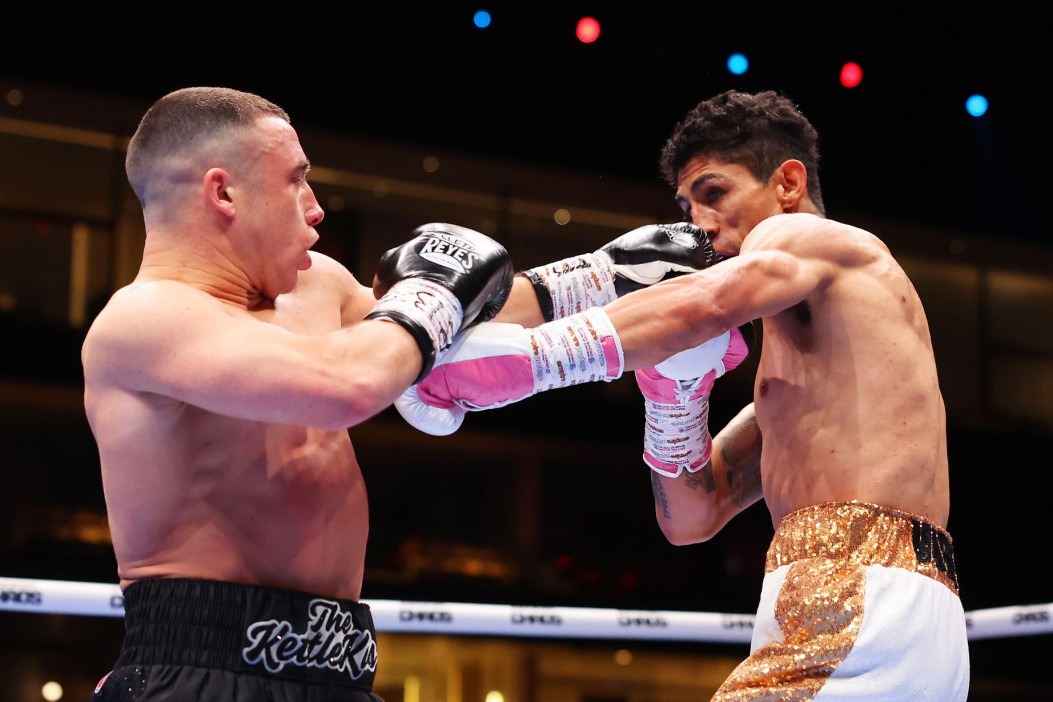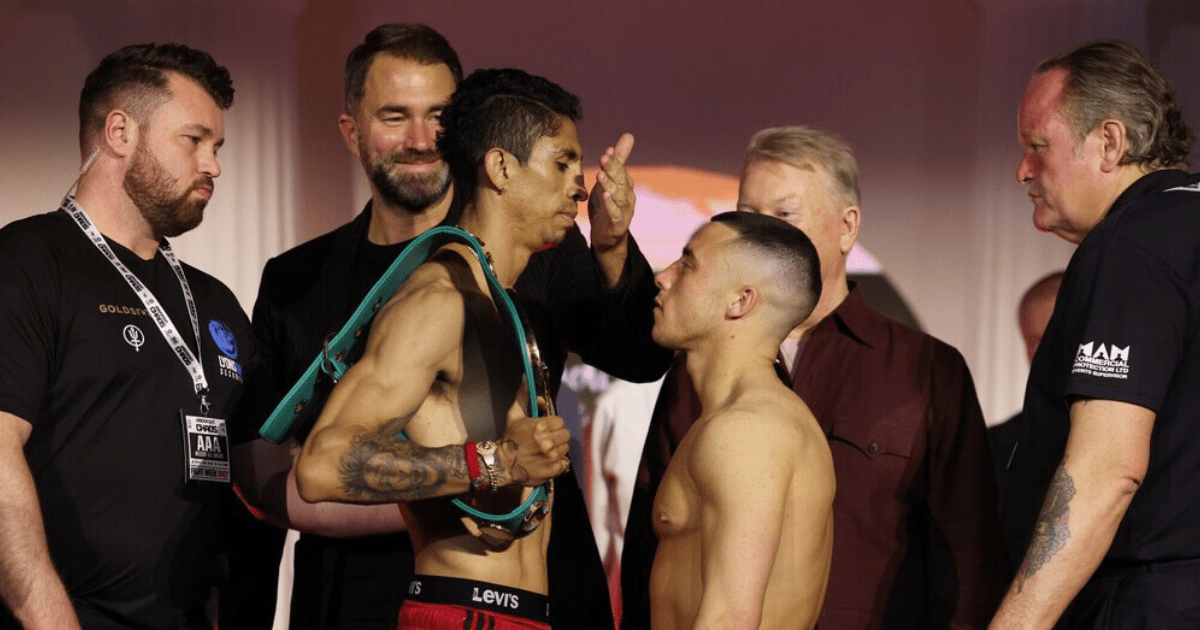Fans Amazed at Height Disparity
Boxing fans were left in disbelief at the significant height gap between Rey Vargas and Nick Ball during their WBC featherweight title fight on the undercard of Anthony Joshua's bout with Francis Ngannou. The 5'11 Vargas towered over the 5'2 Ball, leading to a flurry of comments from shocked spectators.
Promoter Frank Warren's Reaction
Frank Warren, Ball's promoter, expressed surprise at the height difference between the two fighters, noting that it poses a challenge for Ball. Despite the mismatch, Warren believes Ball has the skills to overcome Vargas and secure victory in the ring.
“I didn't realise the absolute [size] disparity," Warren said. "I think that's an advantage for Nick and I hope that's an advantage, he'll even make himself smaller. All Vargas will be doing is punching down and maybe trying to lift his shots up. He's a quality fighter and he's fighting a quality challenger. I honestly feel Nick has the tools to do it and fingers crossed that'll be the case.”
Ball's Rise to the Title
Nick Ball, coming off a decision win against former WBO light-featherweight champion Issac Dogboe, is gearing up for his first shot at a world title. Despite the odds, Ball remains focused on clinching victory and making a name for himself in the boxing world.

Frequently Asked Questions
What are some of the most important components in a boxer’s training regime?
A boxer’s routine is made up of several main components. They include technical skill building, tactical drills and strength and conditioning. Sparring and mental training are also included. Technique-focused workouts improve punch accuracy and defensive maneuvers, while tactical drills develop fight strategies. Sparring is a great way to gain practical experience. Conditioning exercises improve athleticism. Mental training is aimed at building resilience, confidence and focus.
How long usually does it take for a person to become professional boxer.
The time taken to become an elite boxer is variable. The length of time to become a professional can be affected by the person’s initial skill level, his or her ability to adapt and their training. On average, it could take several years of dedicated training and successful amateur experience before one is ready to turn professional. However, some exceptional talents might advance more quickly, while others may need more time to develop.
What kind of diet would you recommend for a new boxer?
A beginner boxer should eat a nutritiously balanced diet to fuel intense workouts and encourage recovery. The general recommendation is to eat a combination of carbohydrates and proteins for energy. Lean protein helps repair and grow muscles, while healthy fats are good for your overall health. As well, vitamins, minerals and hydration are essential. Consulting with a sports nutritionist can provide a personalized diet plan that aligns with the boxer’s training regimen and weight class targets.
What should a potential boxing trainer or coach look like?
If you are looking for a boxing trainer or coach, look for someone with experience, who has a proven track record of success, has a similar coaching style and a thorough understanding of both the technical and strategic elements of the sport. A good trainer also stresses safety, conditioning, as well as personal growth. A coach that motivates and communicates well is important in order to achieve your full potential.
How important mental toughness is it in professional Boxing?
Mental toughness and physical conditioning are equally important in professional boxing. It requires resilience, focus, a high level of pressure tolerance, and a strong psychological attitude to overcome obstacles. Mental preparation is a combination of stress management, visualization and a strong mentality to meet the challenges that are faced in the ring. Mental toughness is essential for a boxer to be able to perform at their best under the pressure of professional competition.
What equipment do you need to get started in professional Boxing?
Essential equipment for anyone who wants to start in professional boxing includes boxing glove, hand wraps and mouthguard (for sparring). Also included are proper footwear. A heavy bag, speed bag, double-end bag, and other training aids are important for technical workouts. You should use durable, high-quality equipment to protect yourself from injury.
How can amateur boxers become professional?
The transition from amateur boxing to professional requires a significant increase in training intensity and mental preparation. Amateur boxers must build a track record by participating in local and regional competitions. To be able to secure professional bouts, it is important to have a professional license in boxing and align yourself with experienced managers or trainers.
Statistics
- Professional boxers typically train 4 to 6 hours per day, 5 to 6 days a week, depending on their fight schedule.
- On average, a professional boxer spars between 100 to 200 rounds in preparation for a major fight.
- Around 60% of professional boxers supplement their income with other activities or jobs, due to variability in fight earnings.
- Reports suggest that successful professional boxers can earn upwards of 50 times more than the median purse for entry-level professionals per fight.
- Statistical data indicates that there has been a 15% increase in the number of professional boxing gyms over the last decade.
- Cardiovascular fitness is critical, with a focus on high intensity interval training, comprising up to 40% of a boxer’s conditioning program.
- Less than 10% of professional boxers are undefeated throughout their career, highlighting the sport’s competitive nature.
External Links
teamusa.org
precisionstriking.com
sweetsciencefitness.com
expertboxing.com
proboxing-fans.com
ringtv.com
usaboxing.org
How To
How to recover after intensive boxing training
Performance and progress are dependent on a quick recovery from intense boxing sessions. Implement a cool-down routine after workouts that includes stretching and low-intensity cardio to reduce muscle soreness. Prioritize nutrition immediately following training; a mix of protein and carbohydrates can aid muscle recovery. Rehydrate yourself after exercise. For recovery, you need to get 7-9 hours of sleep each night. Regular foam rolling and massage can help reduce stiffness by supporting muscle recovery.

